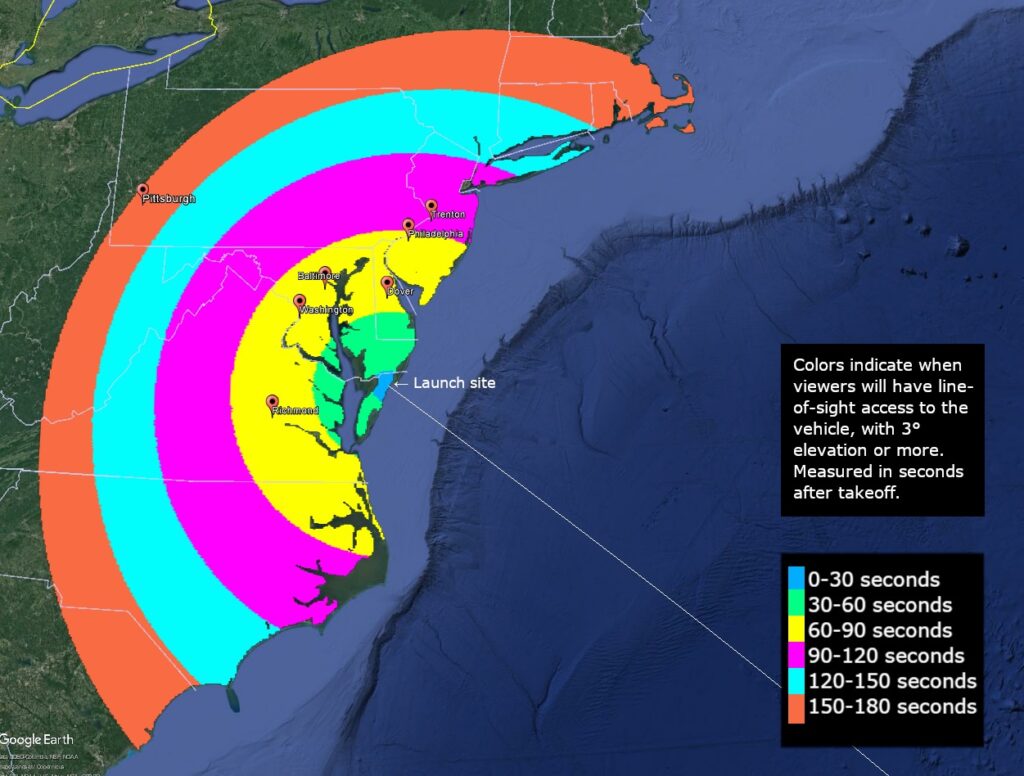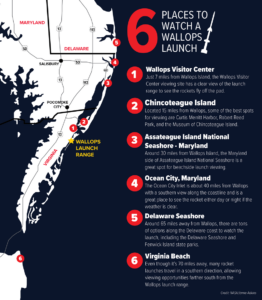
A rocket bound for the International Space Station (ISS) with supplies and science is due to lift-off from the Mid Atlantic in the coming days. NASA says preparations are underway to launch Northrop Grumman’s Antares rocket no sooner than 8:31 pm on Tuesday evening, August 1, from Launch Pad 0A at the Mid Atlantic Regional Spaceport on Wallops Island, Virginia. The Cygnus cargo craft which is atop the rocket will deliver science investigations, supplies, and equipment to the ISS.
If the weather cooperates, the rocket launch will be visible across a broad area extending from the Carolinas into southeastern New England. Those closest to the Wallops Launch Range will have the best views, but even those in New Jersey, southeastern Pennsylvania, all of Delaware, eastern Maryland and Virginia, and northeastern North Carolina should have a good view of the rocket heading up and over the ocean seconds after launch. NASA will be opening the Visitor Center at the Wallops Flight Facility from 5:80 pm to 9 pm on launch day; NASA cautions that the visitors center won’t be open outside of that time to allow for event preparation.

Live launch coverage and countdown commentary will begin at 8 pm on Tuesday and will air on NASA Television and the agency’s website, as well as YouTube, Twitter, and the NASA’s App. Members of the public outside of the viewing area can register to attend the launch virtually. Virtual guests will have access to curated resources, schedule changes, and mission specific information straight to their email inbox. Following each activity, virtual guests are sent a mission-specific collectable stamp for their virtual guest passport.
Northrop Grumman is celebrating a decade of these commercial resupply services missions to the ISS. To date, more than 130,000 pounds of cargo, supplies, experiments, and equipment have been shipped to the ISS via Cygnus. This August mission, known officially as NG-19, will travel to the ISS in a Cygnus craft named the “S.S. Laurel Clark.” It is the company’s tradition to name each Cygnus spacecraft in honor of an individual who has made substantial contributions to human spaceflight. Dr. Laurel Clark was an accomplished undersea medical officer and naval flight surgeon prior to her NASA career. During her first and only spaceflight, STS-107, Dr. Clark and the rest of the crew aboard the Space Shuttle Columbia tragically lost their lives on February 1, 2003 when the shuttle did not survive reentry into Earth’s atmosphere.